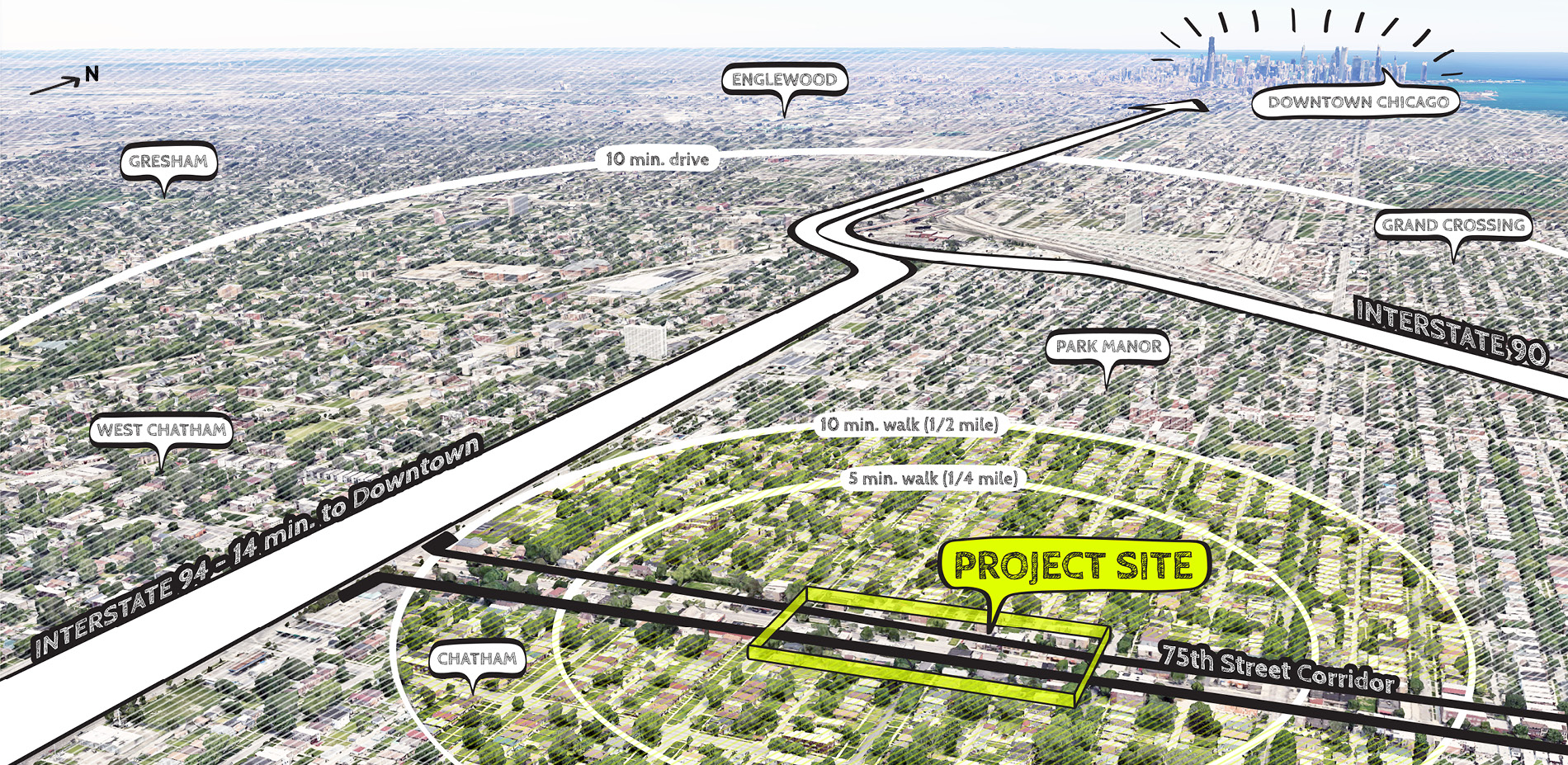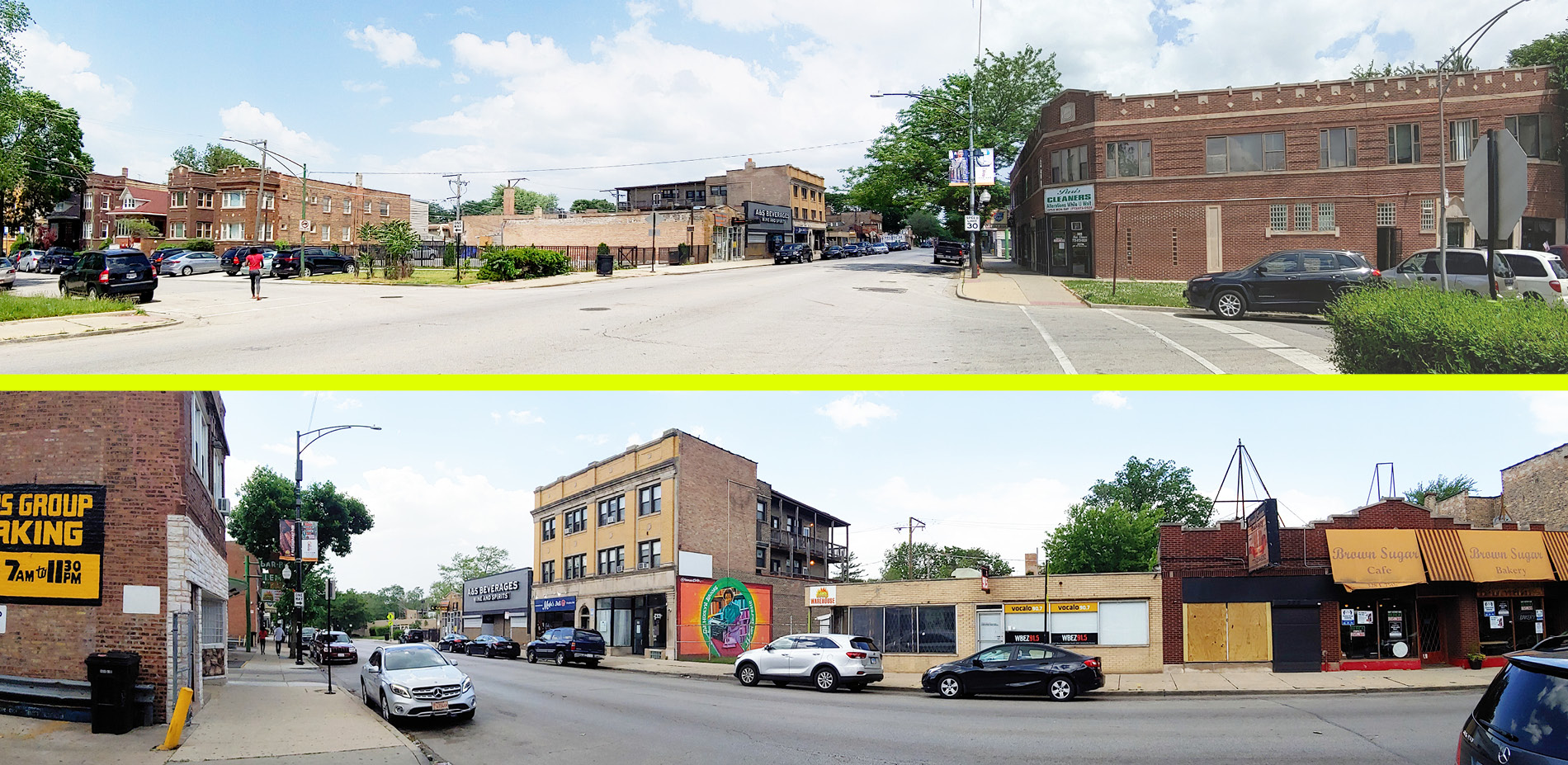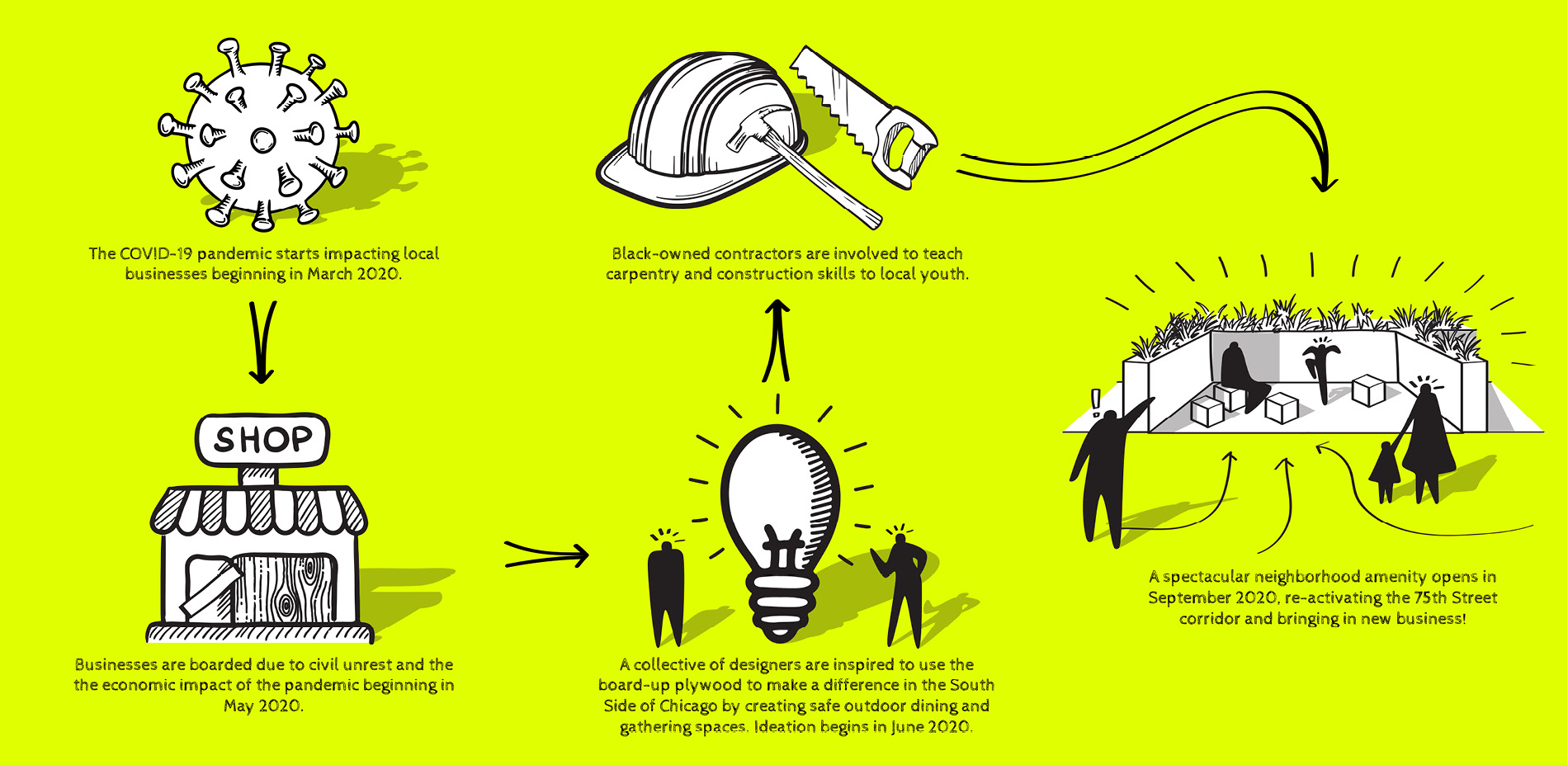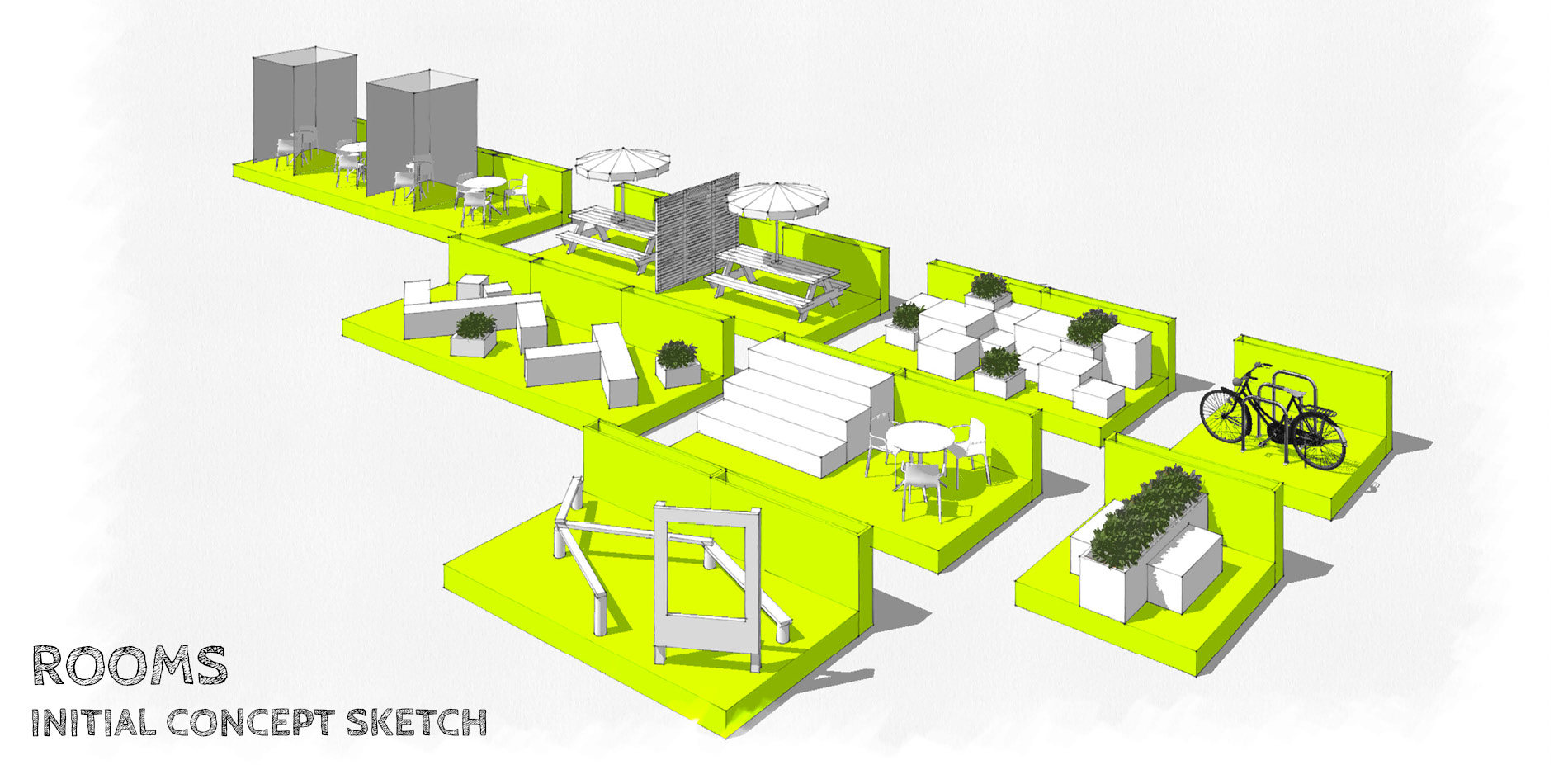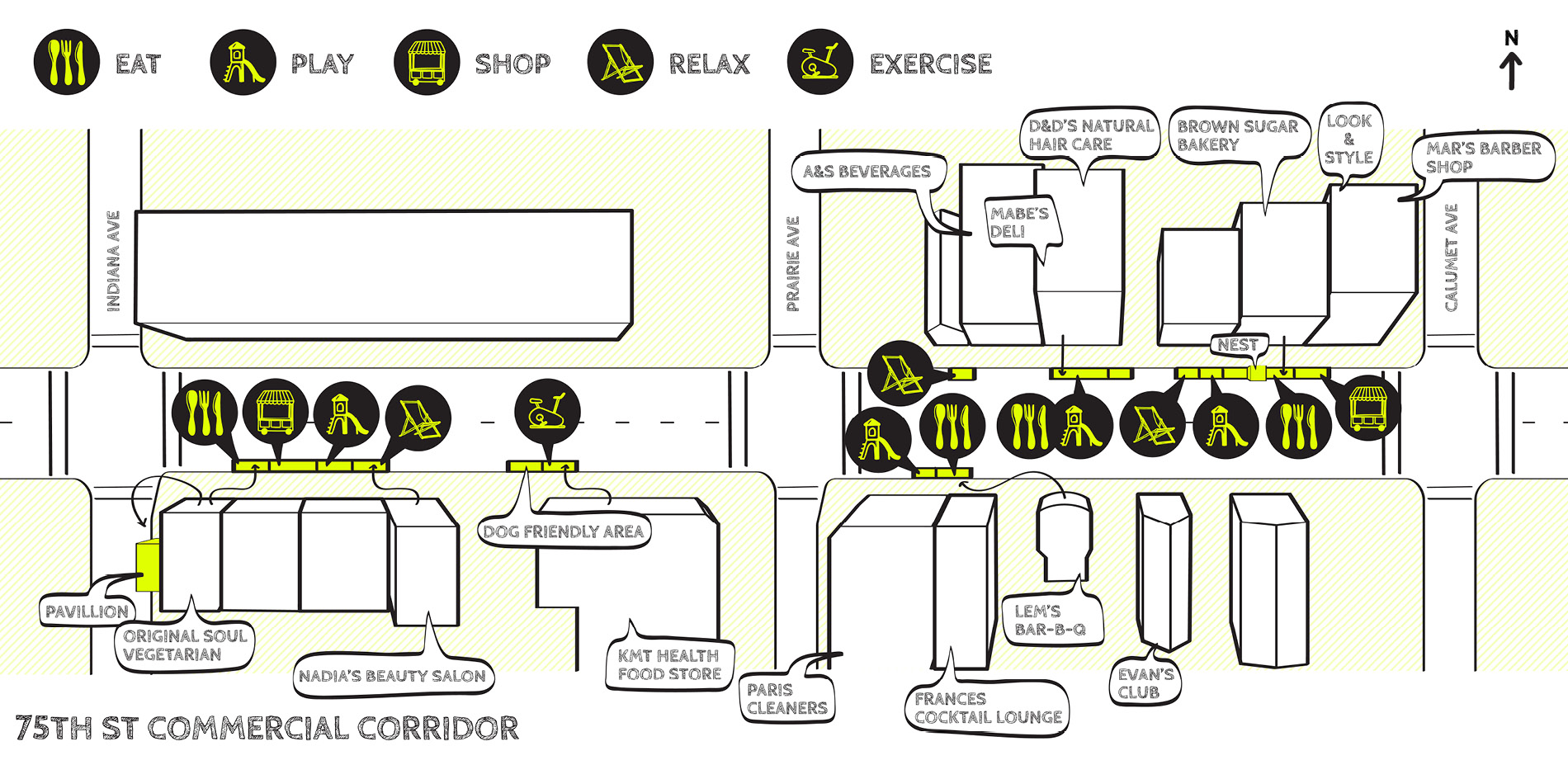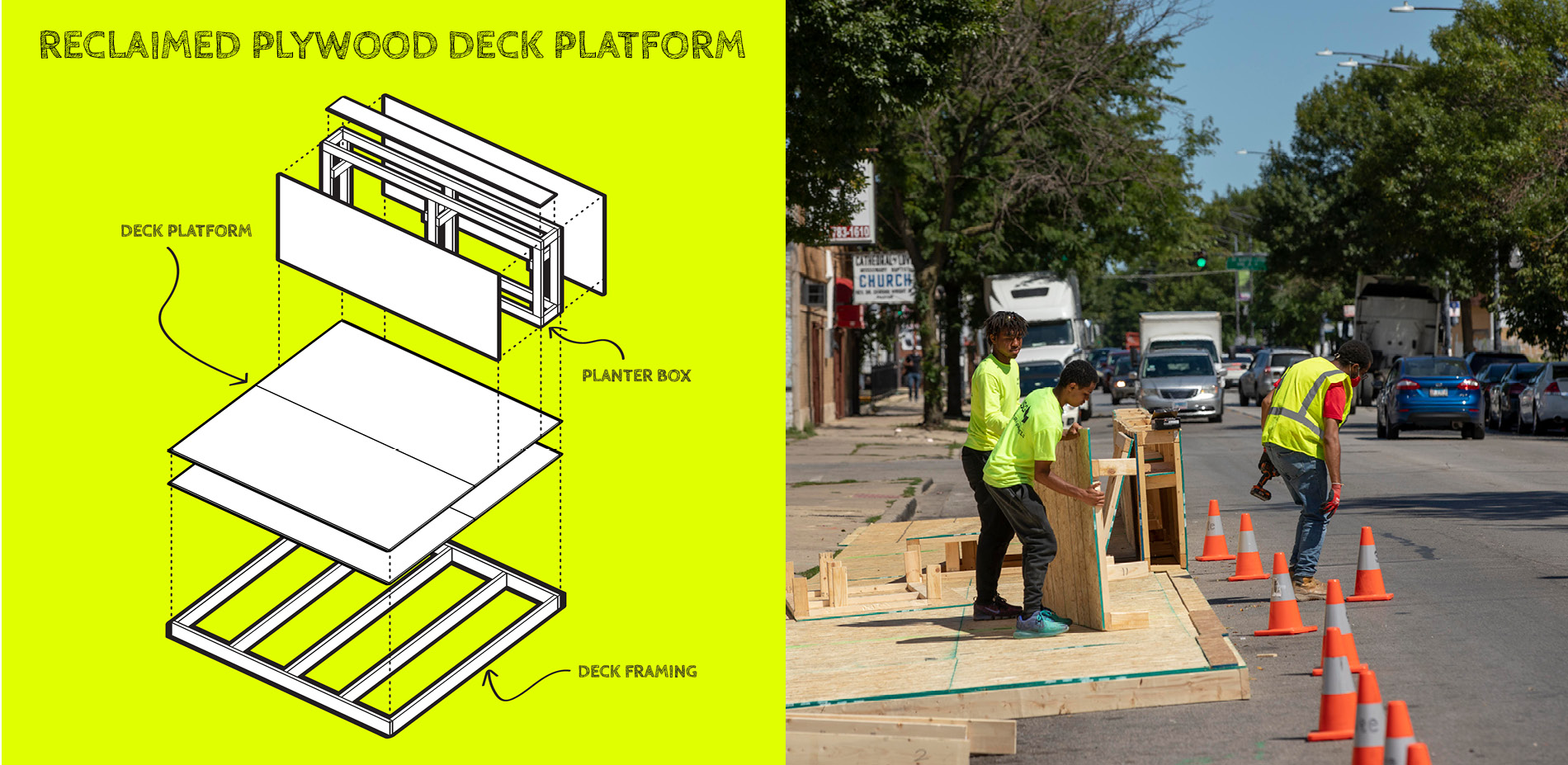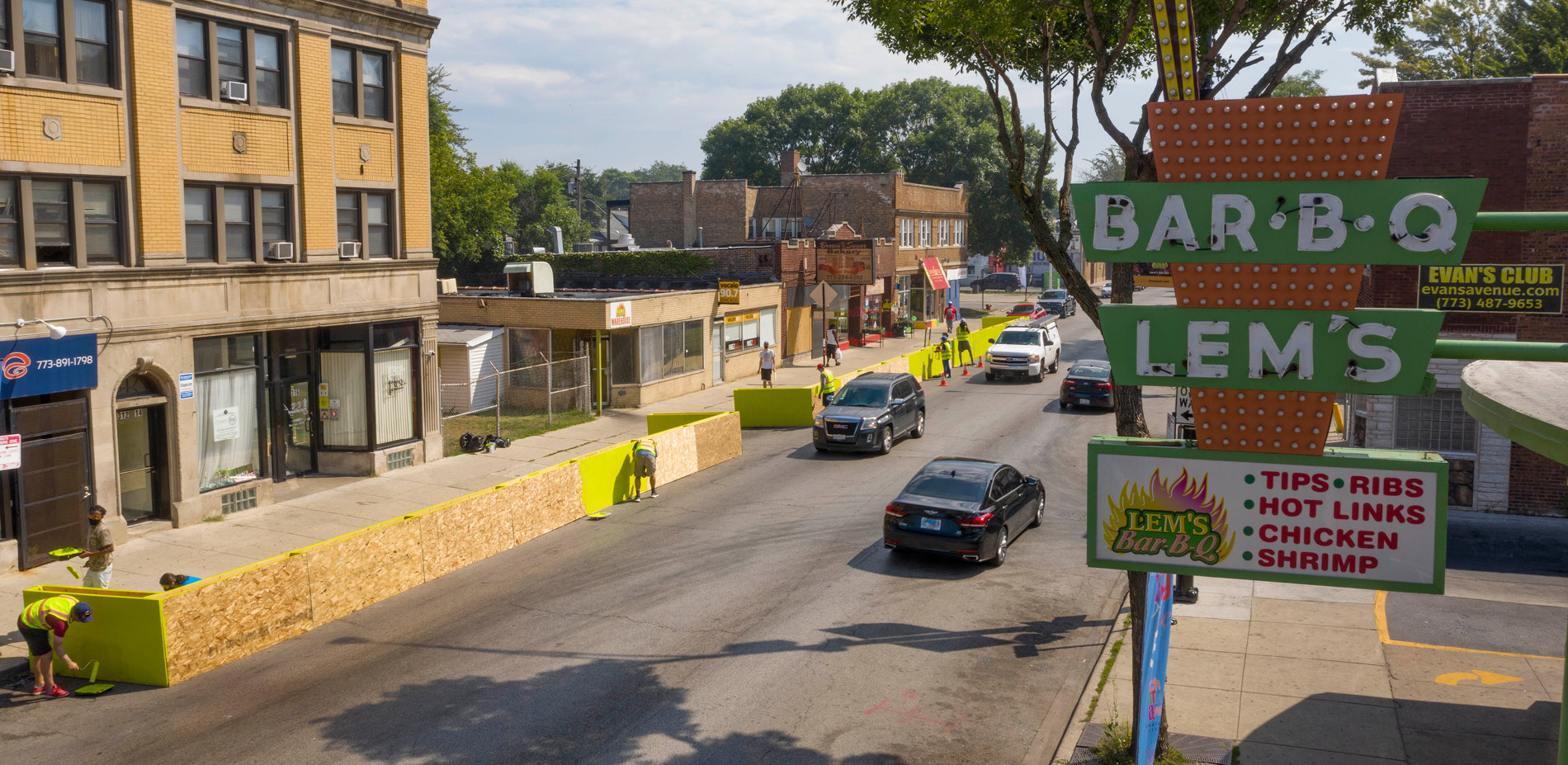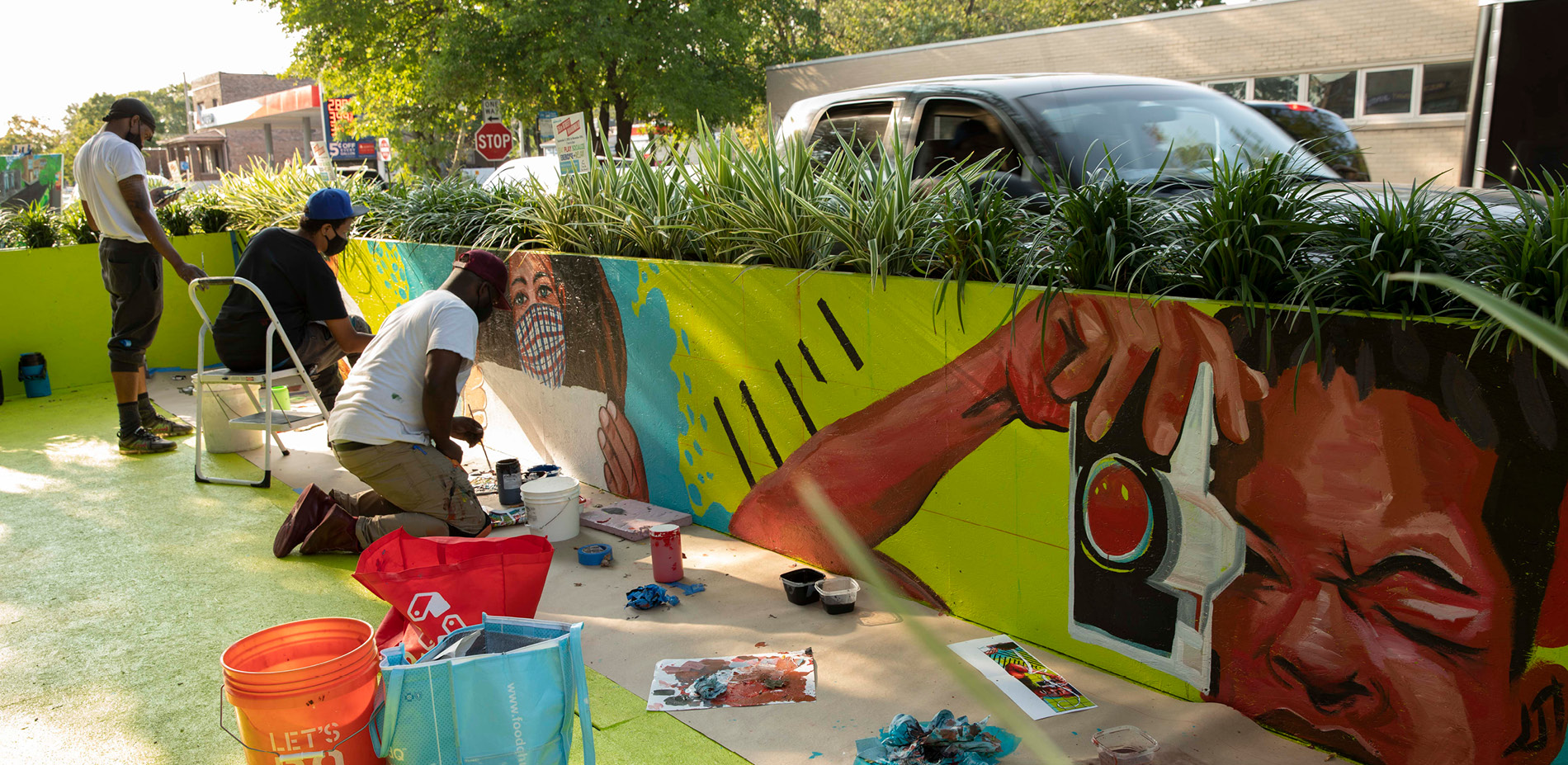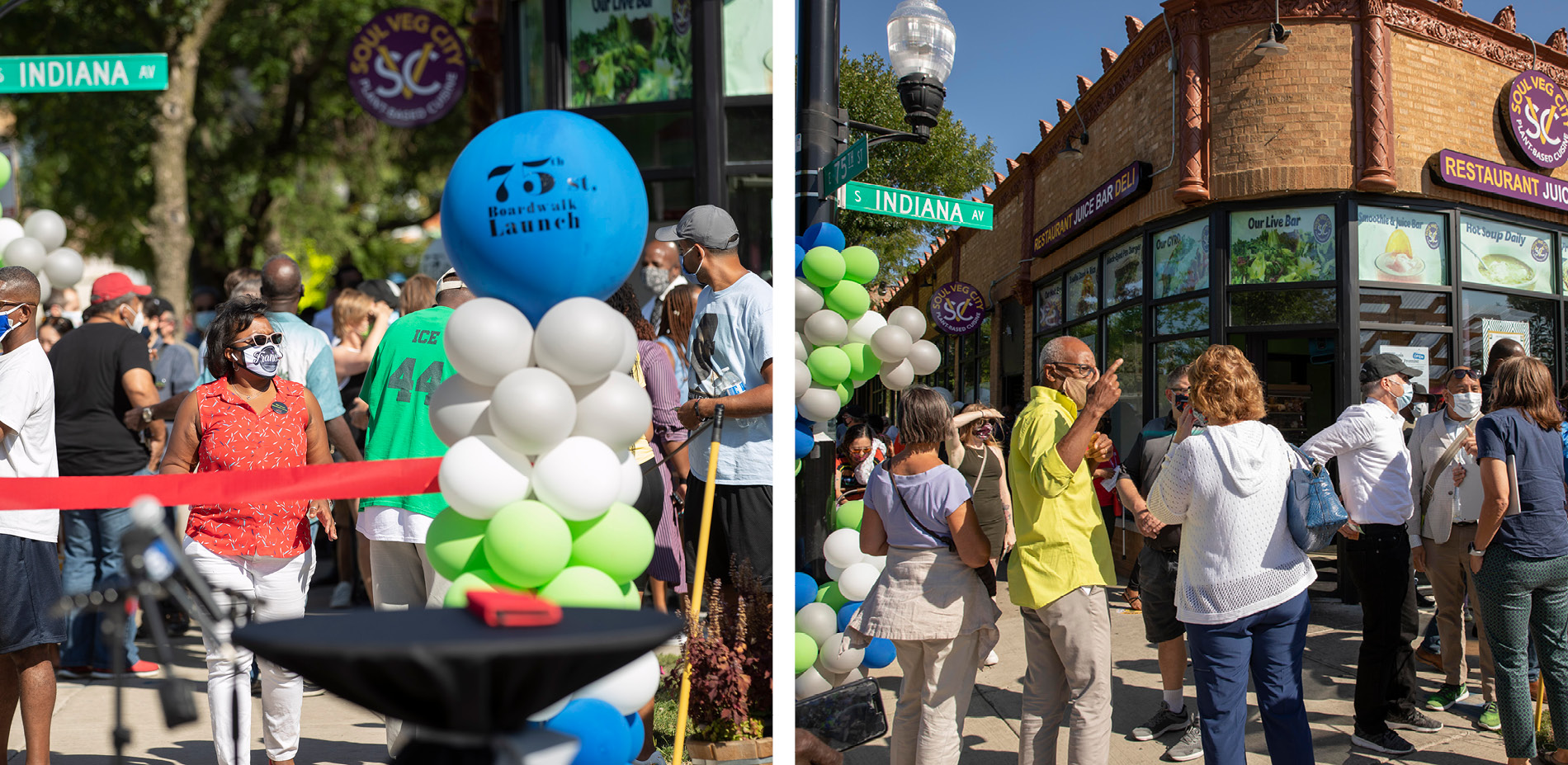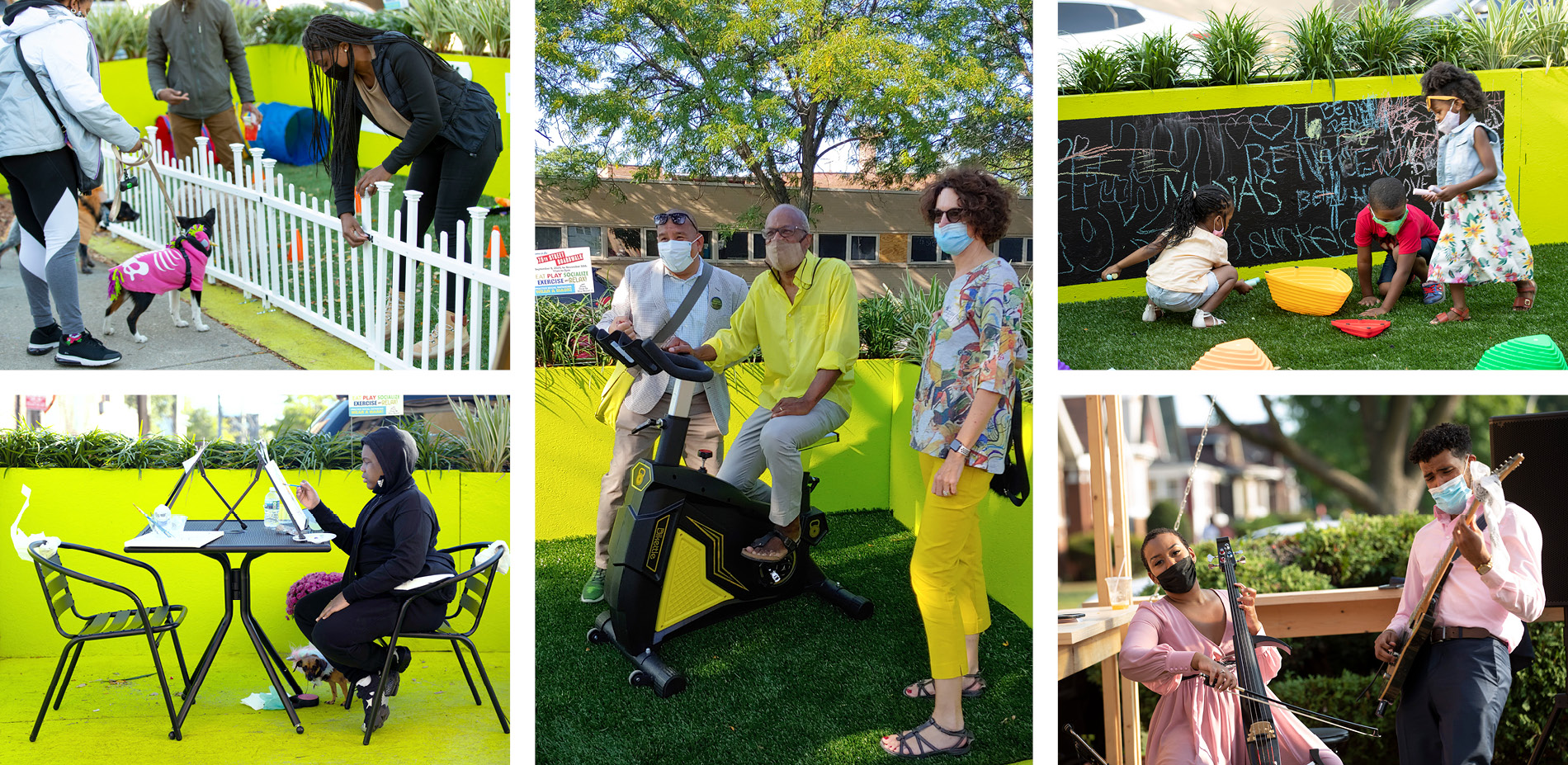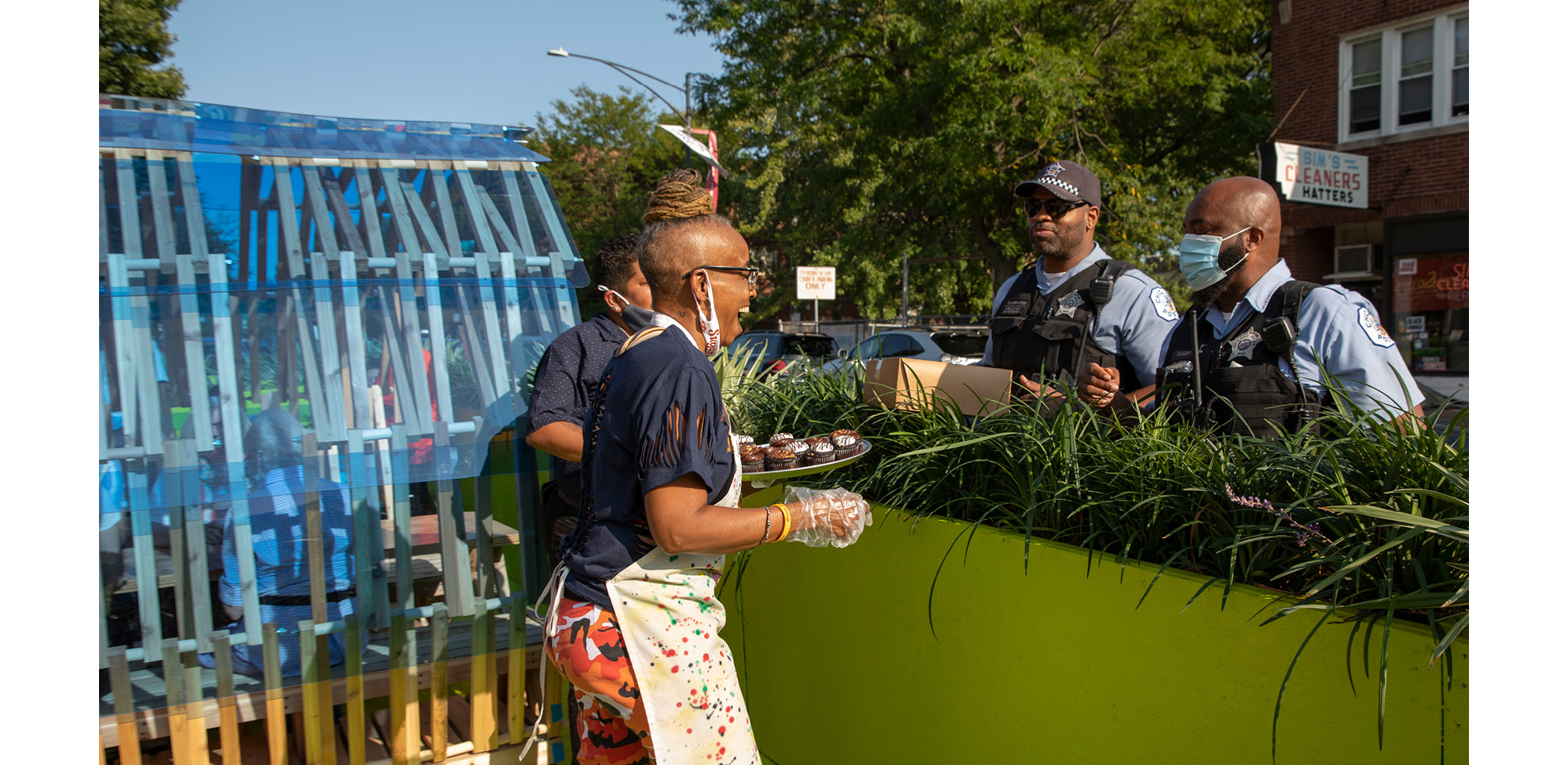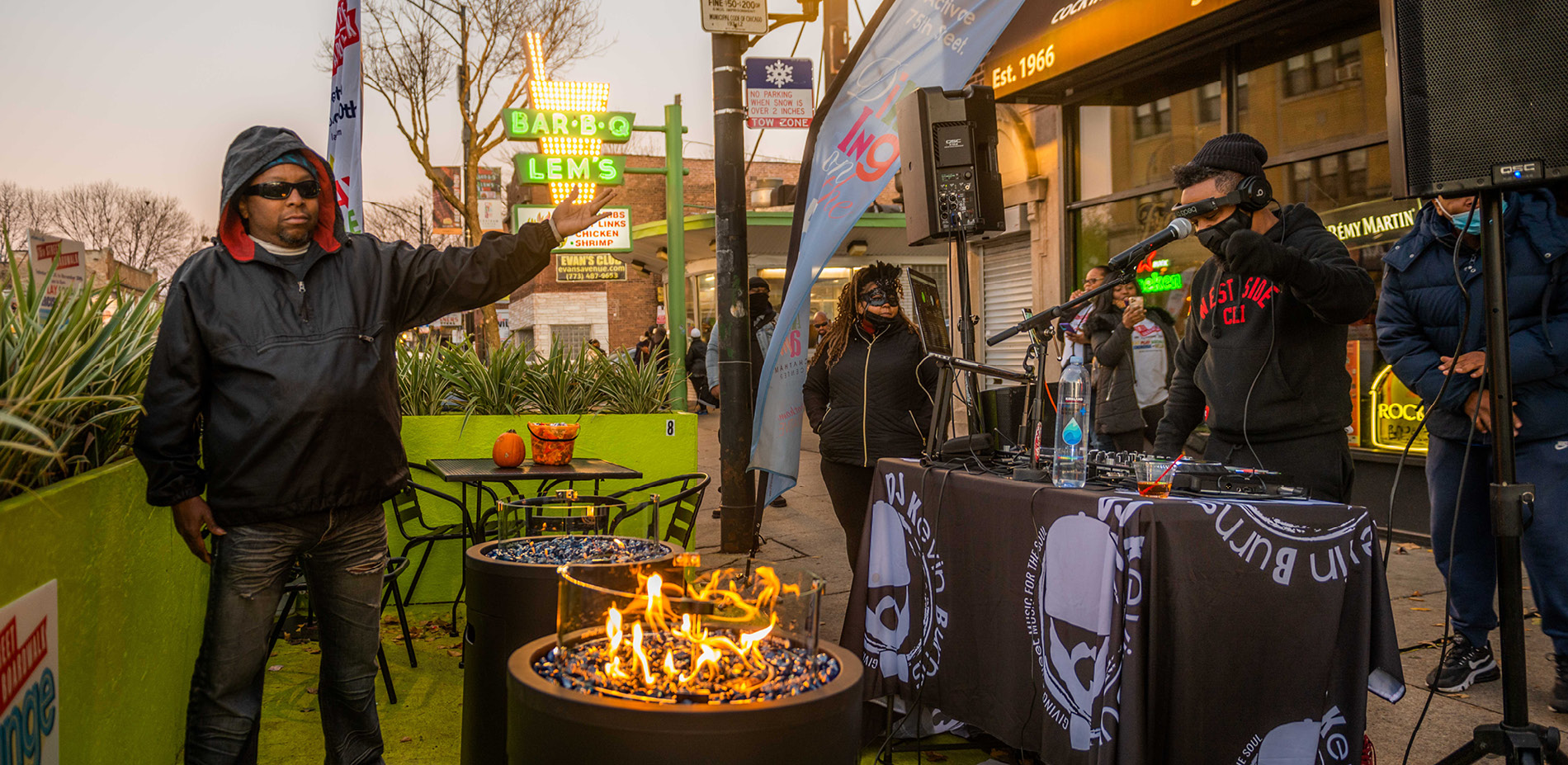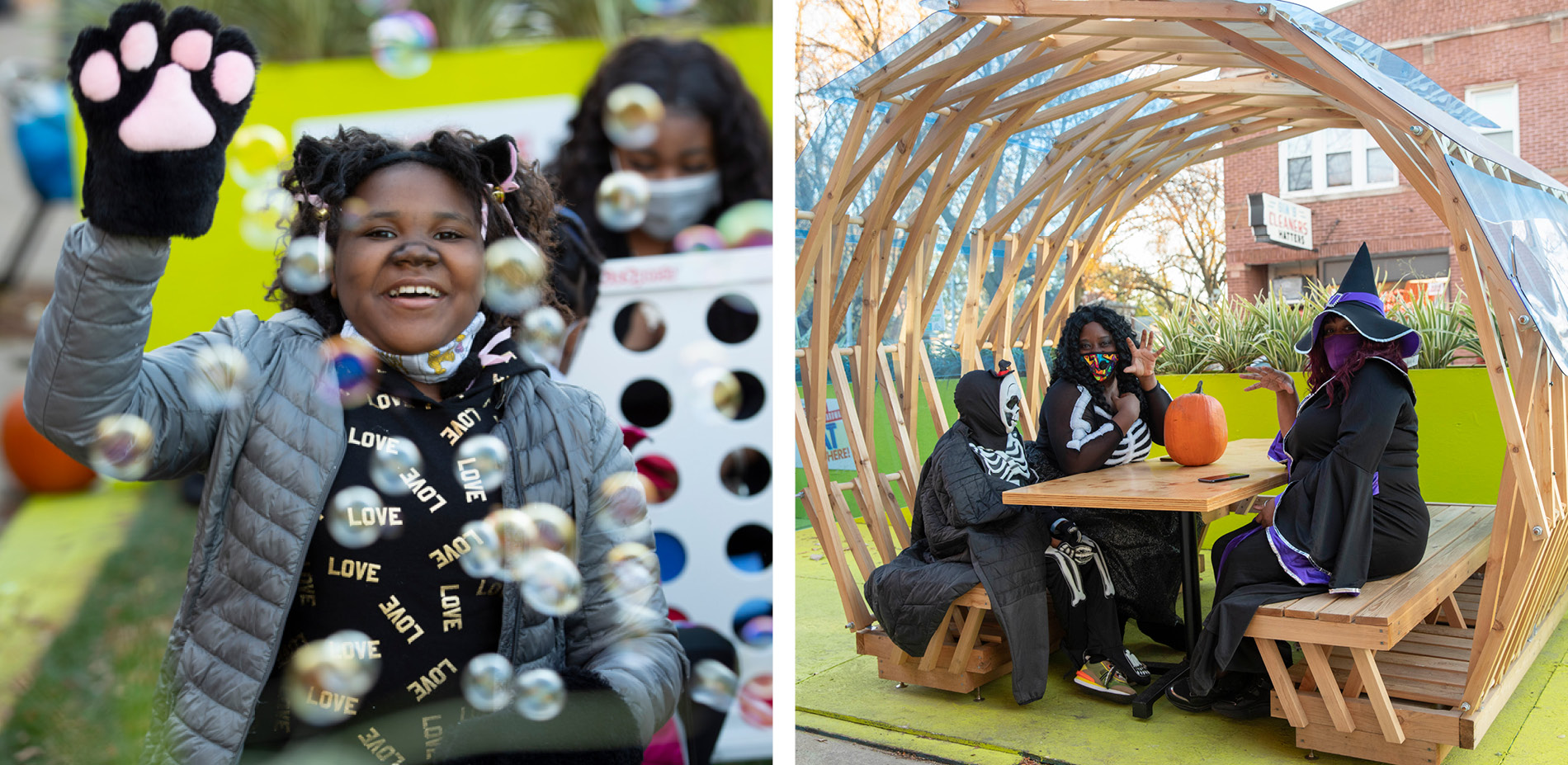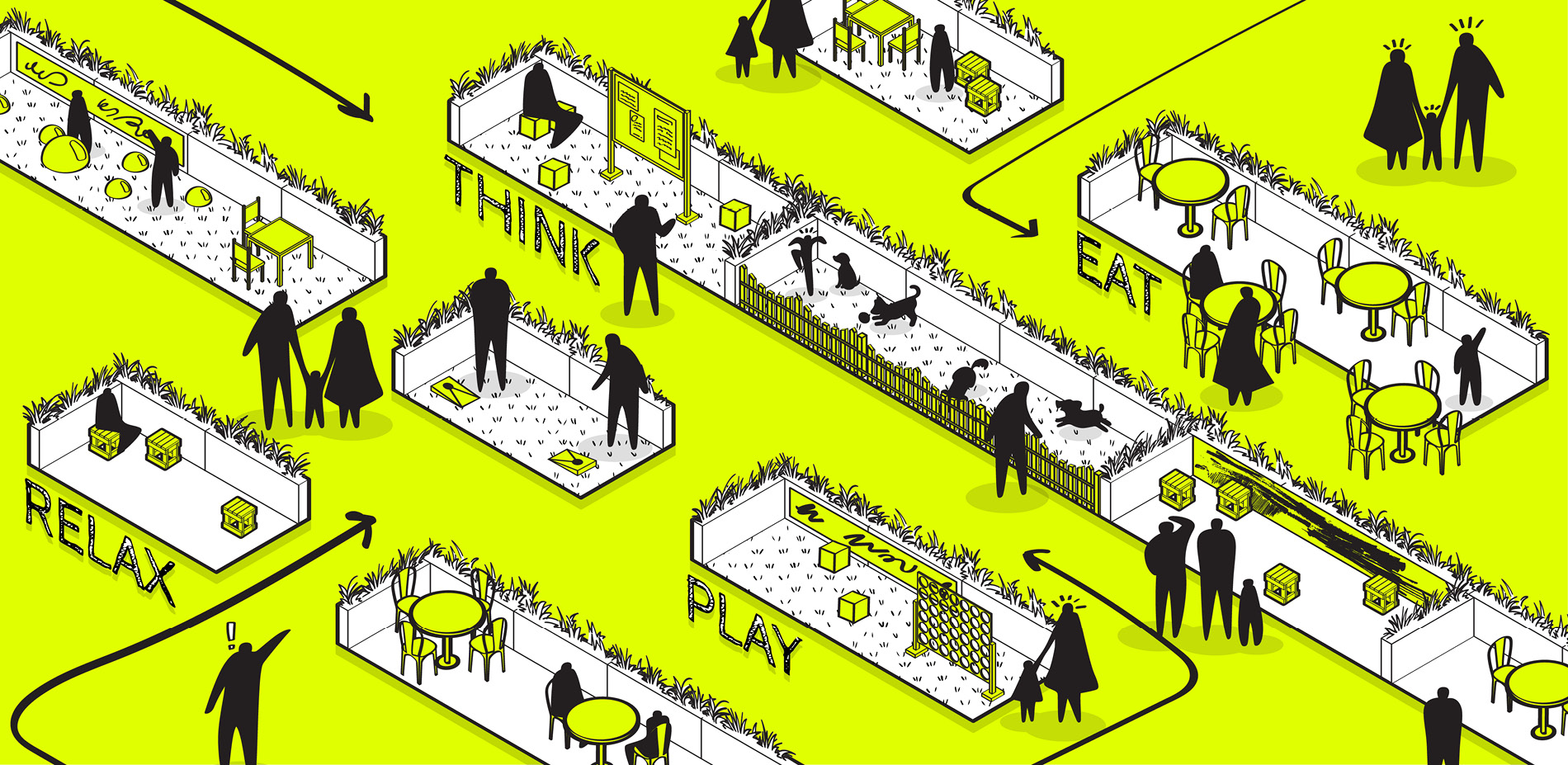75th Street Boardwalk
Honor Award
Urban Design
Chicago, Illinois, United States
site design group, ltd.
Client: City of Chicago, Greater Chatham Initiative
In 2020, reacting to the murder of George Floyd and the COVID-19 pandemic, residents of Chicago’s South Side transformed the 75th Street Boardwalk with a few simple moves and one bright color. Using the same plywood that had boarded up businesses during that summer’s period of civil unrest, locals learned how to construct outdoor room modules to create streetery-style interventions. This is tactical urbanism that empowers communities to redefine their downtown cores or their neighborhoods. It goes to a playbook approach to urbanism, and therefore is not site-specific at all: What can be learned here is applicable not only across all of Chicago, but also around the world.
- 2021 Awards Jury
Project Credits
Greater Chatham Initiative, Program Partner
City of Chicago, Department of Planning and Development and Department of Transportation, Program Partner
All Reimagining Chicago, Program Partner
Brook Architecture, Design Partner
Vladimir Radutny Architects, Design Partner
Booth Hansen, Design Partner
Krueck + Sexton, Design Partner
Brown & Momen, Incorporated, Contractor
Illinois Institute of Technology College of Architecture, University Partner - Design
Project Statement
Located in the heart of Chicago’s South Side Chatham community, the 75th Street Boardwalk activates the public right-of-way by replacing on-street parking spaces with safe outdoor dining and gathering opportunities for the Black-owned businesses and their patrons. The unique placemaking and tactical urbanism project was designed as a series of modules that create outdoor rooms organized to fit the individual needs of the adjacent businesses. Each module has its own program that ranges from seating, dining, fitness, and lawn games. The Boardwalk is built of repurposed plywood that was used to board up Chicago businesses in 2020. The project connected Black contractors with Black youth in the community to empower them by teaching them carpentry and construction skills. Local residents, business owners, and community leaders were deeply involved in all stages of the project – from the initial meet-and-greet to the construction of the Boardwalk itself, serving as a case study in the immense benefits of collaboration, community engagement, and tactical urbanism in supporting local businesses and strengthening a sense of place.
Project Narrative
The 75th Street Boardwalk activates the public right-of-way by replacing on-street parking spaces with safe outdoor dining and gathering opportunities for Black-owned businesses and the community. This unique, short-term placemaking and tactical urbanism project was a collaboration with city agencies, design professionals across Chicago, and a nonprofit community organization that works to invest in South Side communities.
This project arose in the wake of the murders of George Floyd, Ahmaud Arbery, Breonna Taylor, Sean Reed, and many others and the civil unrest in 2020. It was the product of a gathering of like-minded landscape architects, planners, architects, and design professionals. Their mission was to give back and make a difference on the South Side of Chicago by helping businesses and restaurants re-open safely amid the COVID-19 pandemic. Through meeting with civic leaders, the 75th Street Corridor in Chicago's Chatham community was selected for its potential and location within a historically disinvested neighborhood. Chatham has an active and engaged community, and through collaboration with them, this project would have the potential to help numerous existing businesses.
The Boardwalk is located along an urban commercial district known as "Restaurant Row." Chatham comprises a 95% Black population, with a median income of $31,828 (2014-2018 American Community Survey). This Corridor is an essential resource for the surrounding residential community and is the home to more than a dozen long-time, family-owned restaurants. The site held tremendous opportunity to re-invest in and re-energize the Corridor to benefit local businesses and the community.
The 75th Street Boardwalk was inspired by creative tactical urbanism and placemaking projects throughout the world. It is organized as a series of modules that create outdoor rooms designed to benefit the community while also serving the adjacent businesses' needs. The modules include five key themes: Eat, Play, Shop, Relax, and Exercise. Each module is unique, ranging from seating areas to fitness, games, dining, and more. The Boardwalk was designed with community health, safety, and well-being in mind, incorporating built-in planters that create ambiance, while the planter walls meet strict local streetscape safety requirements and separate the Boardwalk from adjacent traffic. To prioritize accessibility for visitors of all abilities, the Boardwalk was installed level with the raised curbs, creating a seamless transition between sidewalk areas and each of the Boardwalk modules.
A key goal of this project was to give back to the community through the process. Residents, business owners, and community leaders were deeply involved in all stages – from the initial meet-and-greet to the Boardwalk's construction. Another critical component of the project was the central mission to connect Black contractors with Black youth in the community, teaching them carpentry and construction skills. The Boardwalk was designed to be simple and use basic construction methods in order to empower, educate, and build the skills of community youth with the hope that they could be easily replicated. Collectively, they built more than 285 linear feet of the Boardwalk. Adding another layer to the project, the Boardwalk was constructed from repurposed plywood used to board up Chicago businesses earlier in 2020, reinforcing the importance of sustainable practices and taking advantage of local and available resources.
Through grassroots outreach, more than 50 volunteers gathered to paint the Boardwalk bright green– a color selected through community input. The design team also worked with local artists to paint murals and signage along the face of the Boardwalk to help with wayfinding and identity.
Concurrent with the Boardwalk, two unique structures were designed and installed by two of the team’s architecture firms. "The Nest" creates a unique seating area for a single group, while "The Pavilion" provides a covered bench and bar top that can be used for multiple groups simultaneously.
When the project needed funding, the design team solicited donations from businesses, obtaining more than $200,000 in monetary and in-kind contributions, without which this project would not have been possible. Additionally, each of the five professional service firms participating in this project (one Landscape Architect and four Architects) participated pro bono.
One of the most notable aspects of the Boardwalk is that it was completed in a mere 12-week timeframe. The project took place within a tremendously short turnaround time, from the project ideation, community organizing, fundraising, and permitting to the final construction and subsequent opening. What looks to be a simple project involved an immense amount of coordination – from meeting the stringent traffic safety requirements to coordinating the donation of supplies, procurement of materials, and getting sign-off from community members on the color and program of the Boardwalk, communication was key.
As the project began taking shape, it was obvious that one of the keys to success was flexibility and adaptability to ever-changing conditions, community preferences, and budget challenges. The project began from a place of professional trust – among the design partners and between those firms and the civic partners, which allowed this new and innovative project to take shape in the tremendously short 12-week timeframe. Where "red tape" can often hinder project timelines and dilute ideas, this project was able to move forward quickly and efficiently based on that trust. For instance, the design team initially intended for the programming in each module to complement but contrast with the adjacent businesses. For example, the dining modules were not originally located next to the restaurants to prevent visitors from feeling unwelcome if they were not dining at the adjacent restaurant. However, after construction was underway, it became clear that the only way for the corridor businesses to take ownership over the maintenance of the Boardwalk was to ensure they had a say in the programming of the modules in front of their storefronts, and as such, the modules were rearranged with their input. Corridor businesses also suggested new modules, which the design team incorporated into the Boardwalk. The new modules included the "pop-up" areas, programmed through ideas and concepts directly from community residents and business owners, such as the addition of rotating (small business) kiosks and the dog-friendly area.
Through extensive engagement with community residents, business owners, and organizations, the Boardwalk was designed with and for Chatham. It supports the growth and strengthening of existing businesses by creating a walkable neighborhood destination for South Side residents to visit to safely access food, services, and community events. Through close collaboration with the community at all stages of the project, the Boardwalk also helps reinforce Chatham's community identity and sense of place. Chatham's imprint can be seen and felt through the iconic design and murals, contributing to an authentic and one-of-a-kind destination for the South Side of Chicago.
Since its opening on September 5, 2020, the 75th Street Boardwalk has been praised by the community for its inclusivity, creativity, and collaborative approach. In its first month alone, the Boardwalk aided in a nearly 30% increase in adjacent restaurants' revenue. What was originally planned to stay in place for only three months is now entering its seventh month and still going strong. Since the opening, the community has held numerous events, including a "Thriller" themed Halloween celebration, art walk, and pre-Kwanzaa shopping event. Since December, outdoor igloos have created safe outdoor dining opportunities through the cold winter months. All in all, this unique project demonstrates the immense benefits of collaboration, community engagement, and tactical urbanism in supporting local businesses and strengthening a sense of place.
Products
-
Furniture
- Custom, built by team and local youth
-
Lumber/Decking/Edging
- Custom, built by team and local youth
Plant List
- Variegated Creeping Lilyturf
